Exercise for fall prevention for seniors is a valuable topic that I wholeheartedly support. As we age, our bodies undergo changes that can increase the risk of falls, leading to serious injuries and a decline in independence. It’s a topic that’s not only important for seniors themselves but also for their caregivers. By incorporating simple exercises into your daily routine, you can significantly reduce your risk of falls, maintain your balance and strength, and continue to enjoy an active and fulfilling life.
Exercise for Fall Prevention for Seniors: Strengthen, Balance, and Stay Safe
Simple Moves for Safer Living
As we age, staying active becomes even more important. For seniors, regular exercise can make a big difference in preventing falls. Fall prevention exercises can reduce the risk of falling by improving balance and strength. This means you can stay independent and keep doing the things you love.
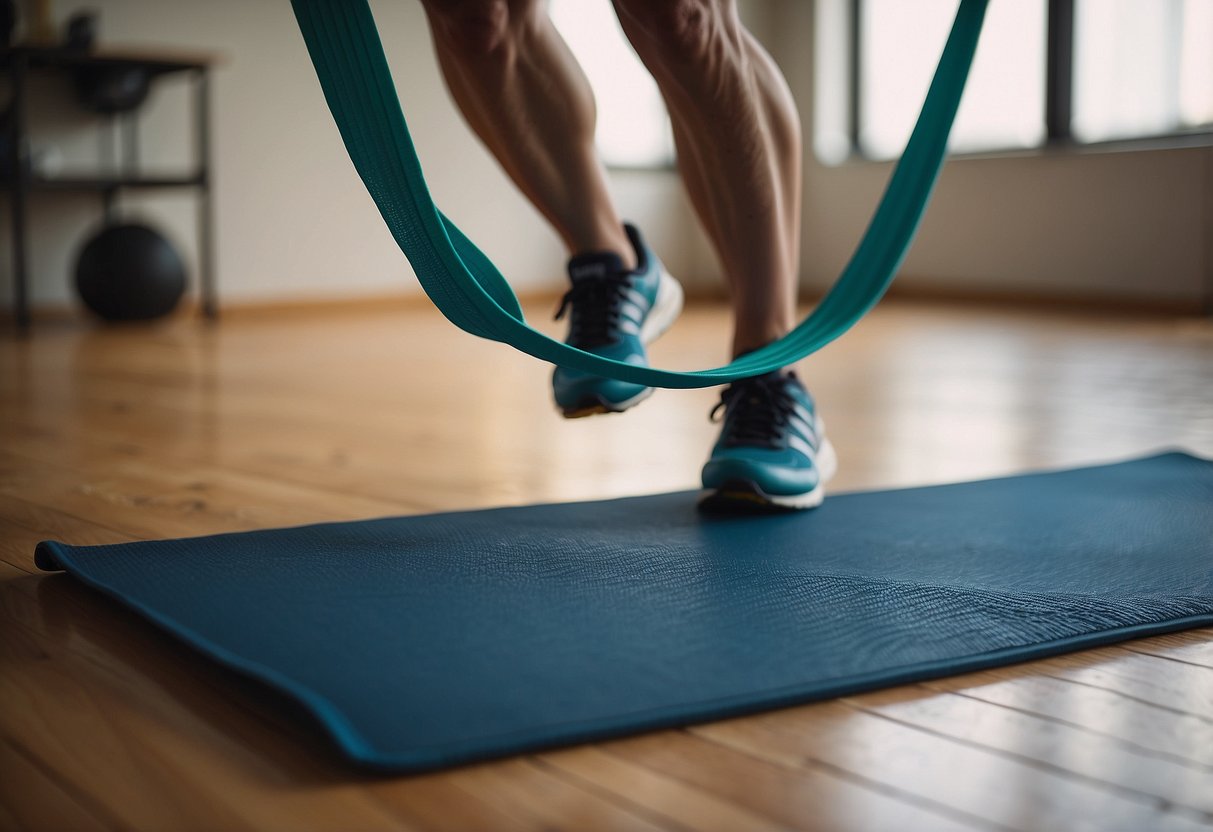
Falling is a real concern for many older adults. But don’t worry – there are simple exercises you can do at home to help. These exercises focus on making your legs stronger, improving your balance, and keeping you flexible. By doing them regularly, you’ll feel more steady on your feet and confident in your movements.
Ready to get started? Let’s look at some easy exercises that can help you stay safe and active. Whether you’re new to exercise or already active, there’s something here for everyone. Remember, it’s never too late to start taking care of yourself and reduce your risk of falls.
Key Takeaways
- Regular exercise can improve your balance and strength, helping to prevent falls
- Simple exercises can be done at home to boost your stability and confidence
- Talk to your doctor before starting a new exercise program to stay safe
Importance of Fall Prevention for Seniors
As you get older, falls become a bigger risk. They can cause serious injuries and health problems. Preventing falls is key to staying independent and healthy.
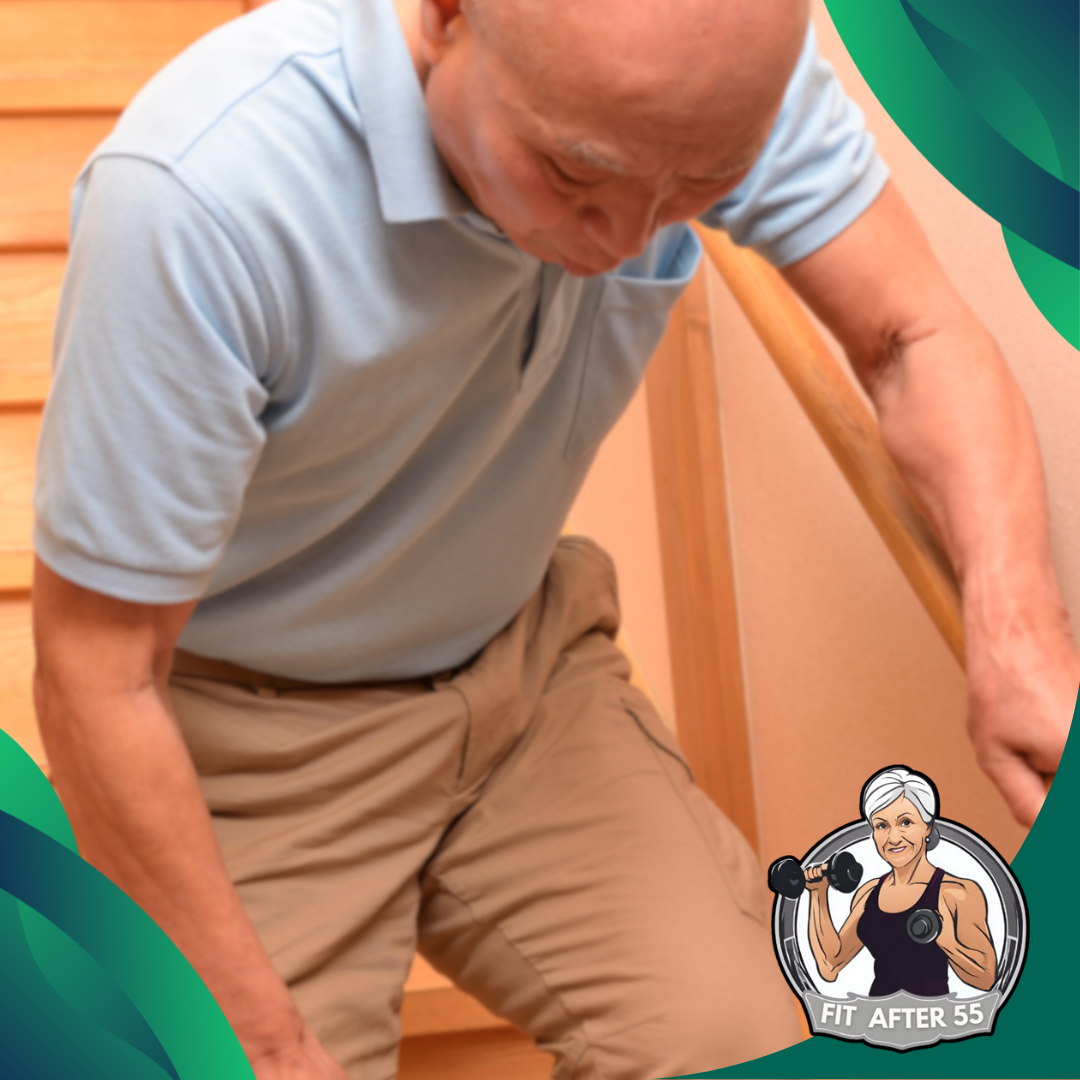
Falls are common in older adults. About 1 in 4 seniors fall each year. These falls can lead to broken bones, head injuries, or worse.
Fall prevention exercises help you stay strong and steady. They improve your balance and muscle strength. This makes you less likely to fall.
Avoiding falls helps you:
- Keep your independence
- Stay active and social
- Avoid hospital stays
- Maintain your quality of life
Your home can be made safer too. Simple changes like removing tripping hazards and adding grab bars can make a big difference.
Regular check-ups are important. Your doctor can review your medications and health to spot fall risks. They might suggest ways to prevent falls that work for you.
Remember, falls aren’t a normal part of aging. With the right steps, you can lower your risk and stay safe. Don’t let fear of falling stop you from enjoying life. Stay active and take steps to prevent falls.
Understanding the Risks

Falls can have serious consequences for seniors. Knowing the facts about fall risks and potential health impacts is key to staying safe.
Fall Statistics for Seniors
One in four older adults falls each year. This number might seem high, but it shows how common falls are for seniors.
Falls are the top cause of injuries for older Americans. They lead to over 3 million emergency room visits yearly.
About 1 in 5 falls causes a serious injury like a broken bone or head injury. These injuries can make it hard to live on your own.
Health Complications from Falls
Falls can cause more than just bumps and bruises. They can lead to serious health issues.
Hip fractures are a common result of falls. These can be very painful and often require surgery. Recovery can take months.
Head injuries are another big concern. Even a mild concussion can cause lasting problems with memory or balance.
Falls can make you afraid of falling again. This fear might make you less active, which can weaken your muscles and increase your fall risk.
Some falls can lead to long hospital stays. This can raise your risk of other health problems like infections or blood clots.
Fundamentals of Exercise for Seniors
Regular physical activity is key for seniors to stay healthy and prevent falls. It’s important to exercise safely and understand the benefits.
Benefits of Regular Physical Activity
Regular exercise helps seniors stay strong and balanced. It boosts your mood and keeps your mind sharp. You’ll sleep better and have more energy for daily tasks.
Exercise can lower your risk of heart disease, diabetes, and other health issues. It also helps keep your bones strong, which is crucial as you age.
By staying active, you’ll improve your coordination and flexibility. This makes it easier to do things like reach for items or get up from a chair.
Regular workouts can help you maintain a healthy weight. This puts less stress on your joints and makes moving around easier.
Safety Tips Before Starting
Before you begin exercising, talk to your doctor. They can help you create a safe workout plan based on your health.
Start slow and build up gradually. Don’t push yourself too hard too fast. Listen to your body and stop if you feel pain.
Wear comfortable, supportive shoes to prevent slips. Make sure your exercise area is clear of tripping hazards.
Stay hydrated by drinking water before, during, and after exercise. Eat a light snack if you need energy.
Choose activities you enjoy. This makes it more likely you’ll stick with your exercise routine.
If you feel dizzy or short of breath, stop and rest. It’s okay to take breaks when you need them.
Core Strengthening Exercises
A strong core helps you stay balanced and steady. These exercises target your stomach and back muscles to improve stability and posture.
Seated Leg Lifts
Sit in a chair with your back straight and feet flat on the floor. Lift your right leg straight out in front of you. Hold for 5 seconds, then slowly lower it back down. Do the same with your left leg.
Repeat this 10 times for each leg. As you get stronger, try holding your leg up for longer. You can also add ankle weights for extra challenge.
This exercise strengthens your core and leg muscles, which helps with balance when walking.

Pelvic Tilts
Lie on your back with knees bent and feet flat on the floor. Tighten your stomach muscles and press your lower back into the floor. Hold for 5 seconds, then relax.
Do this 10 times. Take deep breaths as you do the exercise. If you have trouble lying down, you can do this while sitting in a chair.
Pelvic tilts work your deep abdominal muscles. These muscles are key for good posture and preventing back pain.
Remember to start slowly and stop if you feel pain. As you get stronger, you can increase the number of repetitions.
Balance Enhancement Techniques
To improve balance and prevent falls, seniors can try gentle movements and walking exercises. These techniques help build stability and coordination.
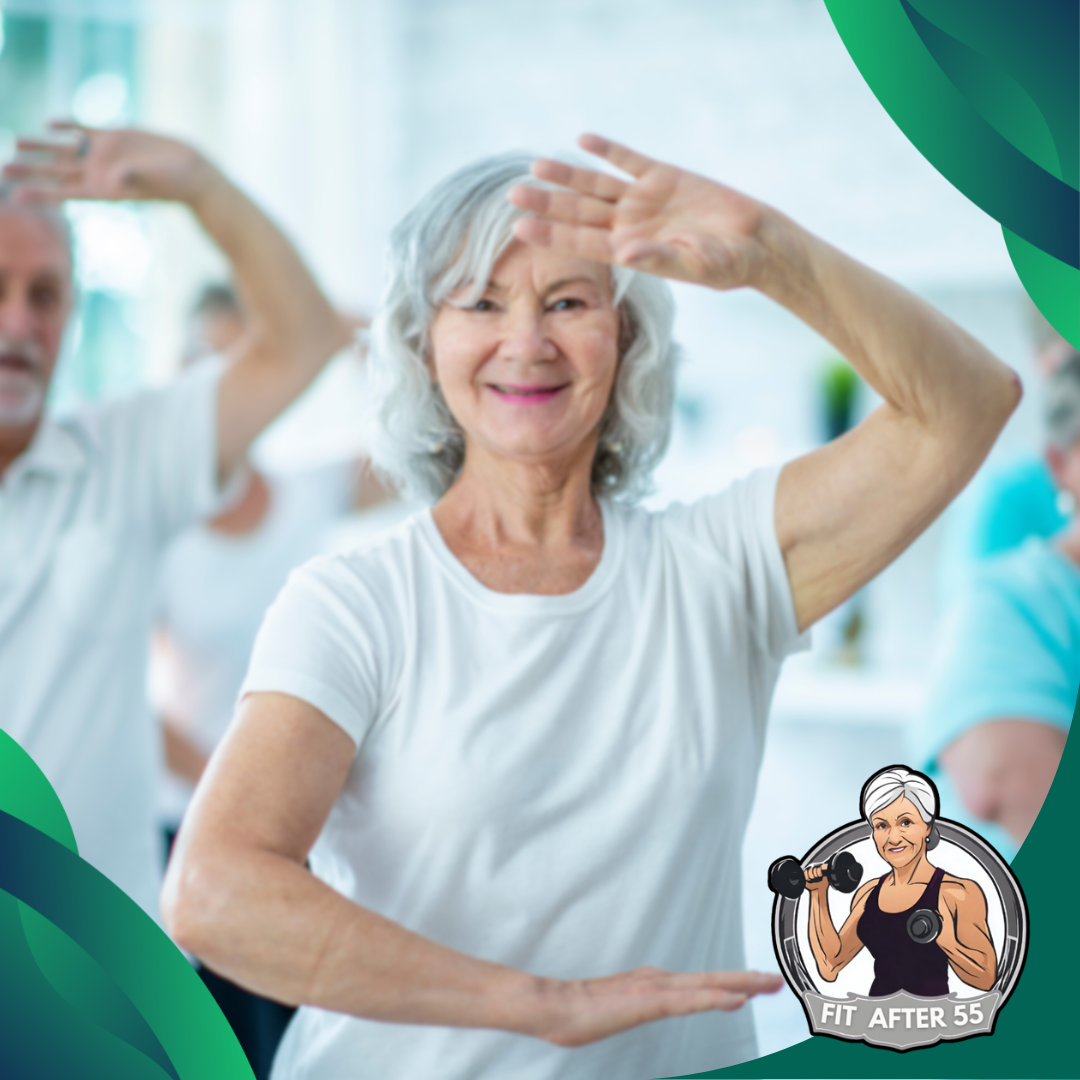
Tai Chi
Tai Chi is a great way for older adults to boost balance. This ancient Chinese practice uses slow, flowing motions to strengthen your legs and core. You’ll learn to shift your weight smoothly from one foot to the other.
As you practice Tai Chi, you’ll become more aware of your body position. This awareness helps you stay steady on your feet. The gentle movements are easy on your joints too.
Try joining a Tai Chi class for seniors at your local community center. You can also find beginner videos online to practice at home. Start with just 10-15 minutes a day and build up over time.
Heel-To-Toe Walks
Heel-to-toe walks are simple but effective for improving your balance. You can do this exercise anywhere you have a clear path to walk.
Start by standing tall with your arms at your sides. Take a step forward, placing the heel of one foot directly in front of the toes of your other foot. Your feet should touch or almost touch.
Focus on a spot in front of you to help keep your head up and stay steady. Take another step, putting your other heel right in front of your toes. Try to walk in a straight line for about 20 steps.
If you feel unsteady, practice near a wall or countertop for support. As you get better, try it without support. This exercise helps train your brain and muscles to work together for better balance.
Flexibility and Mobility Workouts
Stretching exercises can help you move better and lower your chances of falling. These workouts make your muscles longer and your joints more flexible.
Shoulder Stretches
You can do shoulder stretches while sitting or standing. Start by moving your shoulders up towards your ears. Hold for 5 seconds, then relax. Do this 5 times.
Next, roll your shoulders forward 5 times, then backward 5 times. This helps loosen up your upper body.
Try arm circles too. Stretch your arms out to the sides. Make small circles with your hands, then bigger ones. Do 10 circles forward and 10 backward.
These stretches can improve your balance and make daily tasks easier.
Calf Stretches
Calf stretches are great for your legs and can help prevent falls. Stand facing a wall with your hands on it for support.
Step one foot back, keeping it straight. Bend your front knee and lean forward. You’ll feel a stretch in your back leg’s calf. Hold for 30 seconds.
Switch legs and repeat. Do this stretch 3 times on each leg.
For a deeper stretch, try the same move but bend your back knee slightly.
Regular calf stretches can make walking easier and safer. They also help keep your ankles flexible, which is key for good balance.
Upper and Lower Body Strengthening
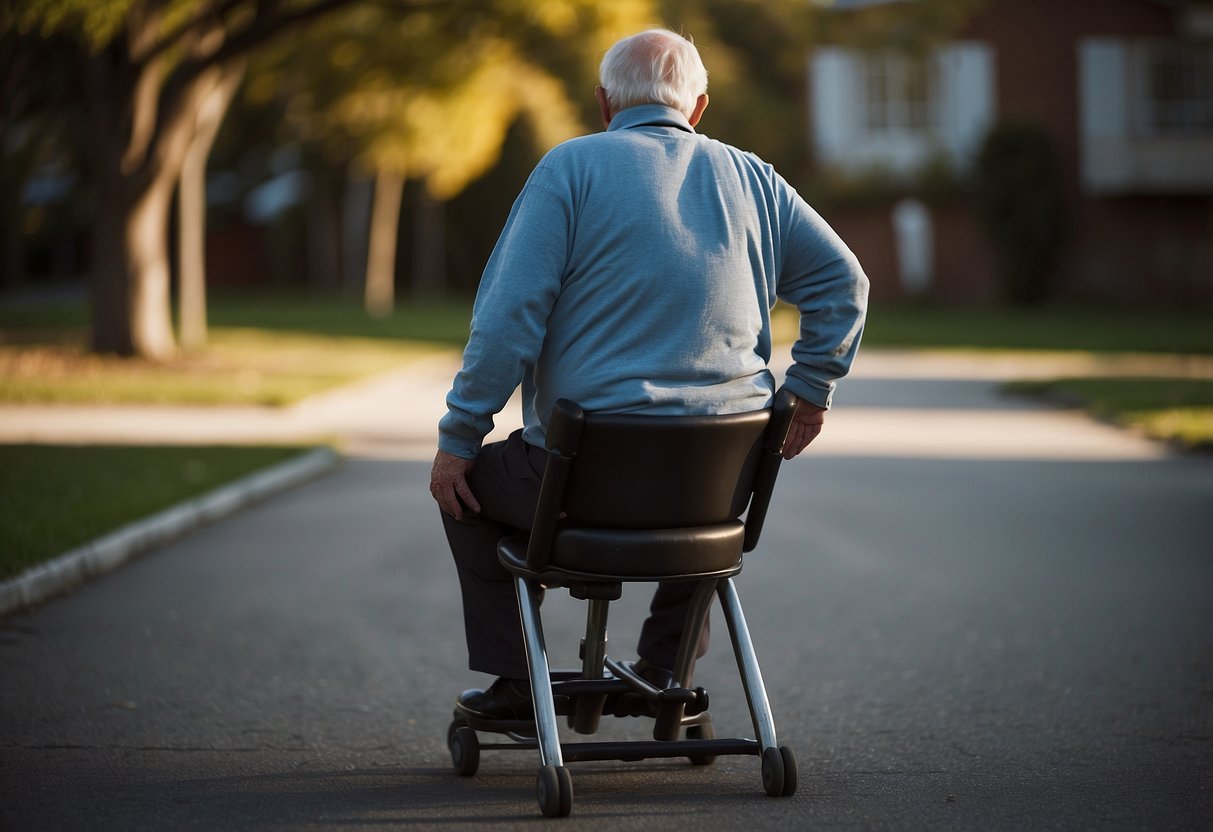
Building strength in your arms and legs can help prevent falls. Try these exercises to improve your balance and stability.
Arm Raises
Arm raises are great for building upper body strength. Start by sitting in a chair with your feet flat on the floor. Hold light weights or water bottles in each hand.
Slowly raise your arms out to the sides until they’re at shoulder height. Lower them back down gently. Do this 10 times.
Next, raise your arms straight in front of you to shoulder height. Lower them back down. Repeat 10 times.
These moves help strengthen your shoulders and upper arms. This can make daily tasks easier and help you catch yourself if you start to fall.
Chair Squats
Chair squats strengthen your lower body, which is key for good balance. Stand in front of a sturdy chair with your feet hip-width apart.
Slowly lower yourself as if you’re about to sit down. Stop just before you touch the chair, then stand back up. Try to keep your weight in your heels.
Start with 5 squats and work up to 10. Rest if you need to.
As you get stronger, try holding the squat position for a few seconds before standing up. This exercise builds strength in your thighs and buttocks, which helps with walking and climbing stairs.
Endurance Building Activities
Regular endurance exercises help seniors improve their stamina and cardiovascular health. These activities are great for fall prevention and overall fitness.
Walking
Walking is an excellent low-impact exercise for seniors. It’s easy to start and can be done almost anywhere. You can begin with short 10-minute walks and gradually increase your time and distance.
Try to walk on different surfaces to challenge your balance. Sidewalks, grass, and indoor tracks are good options. Remember to wear comfortable shoes with good support.
You can make walking more fun by inviting a friend or joining a walking group. This also adds a social element to your exercise routine.
Aim for at least 30 minutes of walking most days of the week. If that’s too much at first, break it up into smaller sessions throughout the day.
Swimming
Swimming is a great full-body workout that’s easy on your joints. It helps build endurance without putting stress on your bones and muscles.
You don’t need to be an expert swimmer to benefit. Water aerobics classes are a fun alternative if you’re not comfortable swimming laps.
The buoyancy of water reduces your risk of falling while exercising. This makes it a safe option for seniors with balance issues.
Try to swim or do water exercises for 20-30 minutes, 2-3 times a week. Start slowly and increase your time as you get stronger.
Remember to always swim in a supervised area. Many local pools offer senior-friendly swim times or classes.
Crafting a Sustainable Exercise Plan
Creating an exercise plan you can stick to is key for fall prevention. Start small and build up slowly. This helps you avoid getting overwhelmed or injured.
Pick activities you enjoy. If you like dancing, try a seated dance class. If you prefer the outdoors, take short walks in a park.
Set realistic goals. Aim for 2-3 sessions per week at first. You can increase this over time as you get stronger.
Balance exercises are crucial. Try standing with your feet together for 10 seconds. Work up to 30 seconds as you improve.

Balance exercises are crucial. Try standing with your feet together for 10 seconds. Work up to 30 seconds as you improve.
Strength training is also important. Use light weights or resistance bands. Start with 1 set of 10 repetitions for each exercise.
Mix things up to keep it interesting. Try different exercises each week. This challenges your body in new ways and prevents boredom.
Listen to your body. If something hurts, stop and talk to your doctor. It’s okay to take rest days when you need them.
Find an exercise buddy. This makes workouts more fun and helps you stay accountable. You can motivate each other on tough days.
Track your progress. Keep a simple log of your exercises. Seeing your improvements can be very motivating.
Remember, consistency is key. Even a little exercise done regularly can make a big difference in preventing falls.
Professional Guidance and Resources
Getting expert help and using good materials can make fall prevention easier. You can learn safe ways to move and stay active as you age.
Working with a Physical Therapist
A physical therapist can be a big help for fall prevention. They can check how you move and make a plan just for you. You’ll learn exercises to boost your balance and strength.
Your therapist might teach you: • How to stand up safely • Ways to walk better • Exercises for your legs and core
They can also look at your home and suggest changes to make it safer. This might include adding grab bars or removing trip hazards.
Educational Material and Classes
Many places offer classes and info about fall prevention. Your local senior center or hospital might have fall prevention programs. These can teach you:
• How to spot fall risks • Ways to make your home safer • Good exercises for balance
You can also find helpful books and videos. Some are made just for older adults. Look for ones that show easy-to-follow exercises.
Online resources can be useful too. The CDC has a guide with tips and exercises you can do at home. Always check with your doctor before starting new exercises.
Continued Motivation and Support
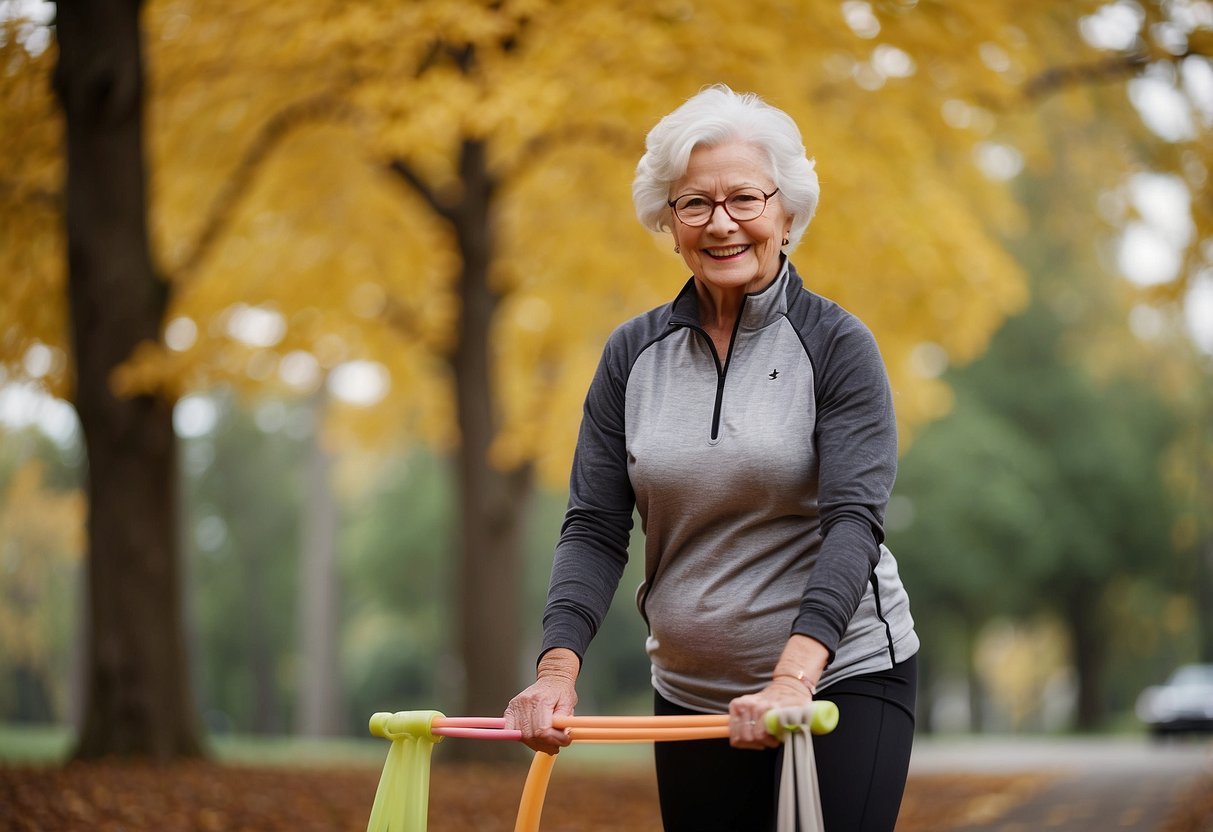
Staying motivated can be tough, but it’s key to keeping up with your fall prevention exercises. Here are some tips to help you stay on track:
Find an exercise buddy. Ask a friend or family member to join you. It’s more fun and you can keep each other accountable.
Set small, achievable goals. This could be doing your exercises three times a week or improving your balance for 10 seconds longer.
Reward yourself. When you reach a goal, treat yourself to something you enjoy. Maybe a nice meal or a movie night.
Keep a log of your progress. Write down how long you exercised or how many reps you did. Seeing your improvement can be very motivating.
Mix it up. Try different exercises to keep things interesting. You could do balance exercises one day and strength training the next.
Join a class. Many community centers offer fall prevention exercise classes for seniors. It’s a great way to meet people and stay motivated.
Remember, every bit of exercise helps. Even on days when you don’t feel like doing much, a little movement is better than none.
If you ever feel discouraged, remind yourself why you started. Staying active helps you maintain your independence and enjoy life to the fullest.
Exercise for Fall Prevention for Seniors: A Path to Independence and Peace of Mind
As we’ve explored, exercise for fall prevention for seniors is more than just a physical activity; it’s a powerful tool that can significantly improve your quality of life. By strengthening your muscles, enhancing your balance, and increasing your overall stability, you’re not only reducing your risk of falls but also ensuring greater independence and peace of mind.
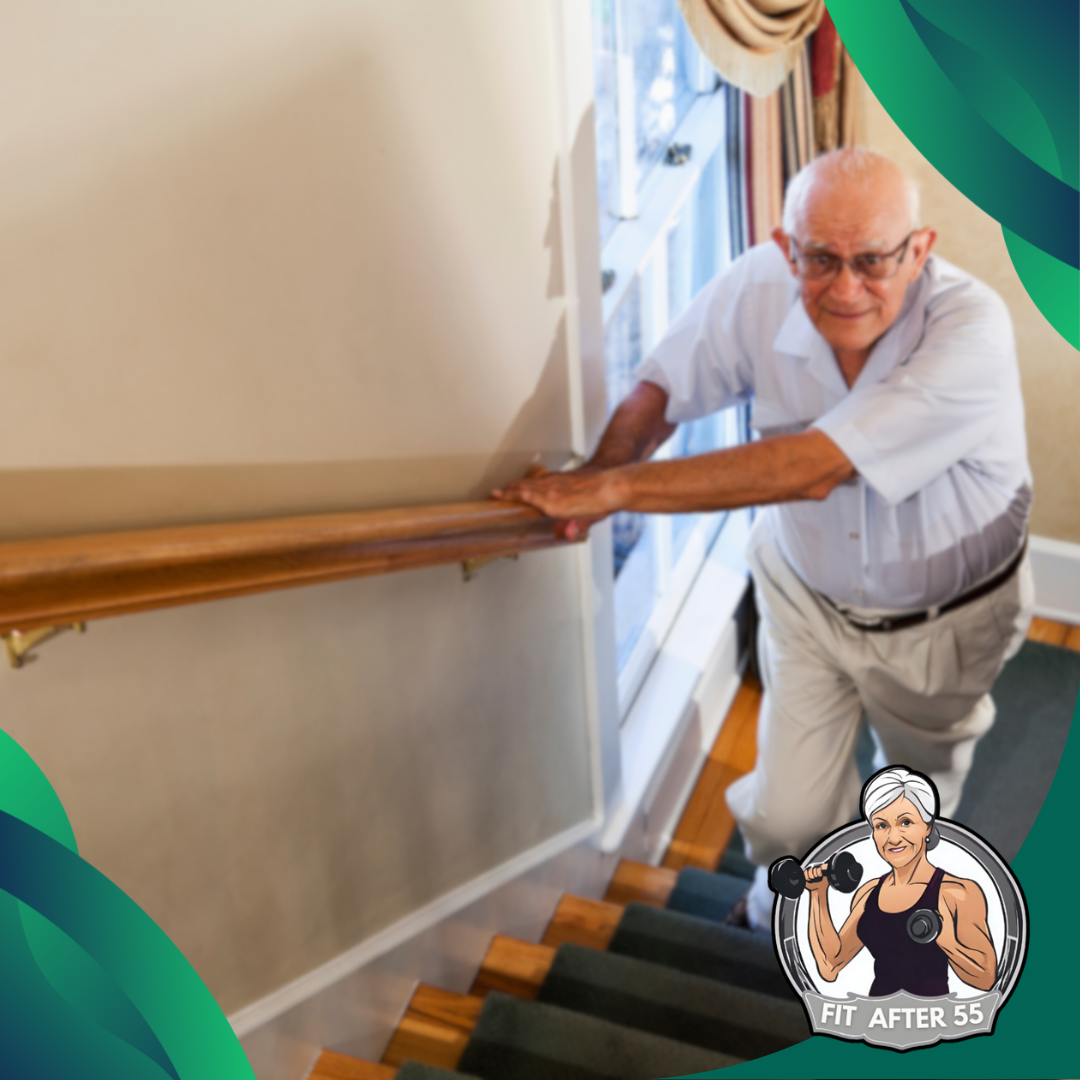
For seniors, the ability to move freely without fear of falling is invaluable. It allows you to continue participating in activities you love, maintain social connections, and live a more fulfilling life. And for caregivers, knowing that their loved ones are taking steps to prevent falls can provide a sense of reassurance and reduce stress.
So, let’s make exercise a priority. Start with small, manageable steps and gradually increase the intensity as you build strength and confidence. Remember, it’s never too late to begin. By committing to a regular exercise routine, you’re investing in your health, your safety, and your future.
Frequently Asked Questions
Fall prevention exercises can help seniors stay safe and independent. These exercises focus on improving balance, strength, and mobility. Let’s explore some common questions about fall prevention exercises for older adults.
What exercises can improve balance and prevent falls in seniors?
Balance and strength exercises are key for fall prevention. Try standing with your feet together for 10-30 seconds. Once you master this, try standing on one foot for the same amount of time.
You can also practice heel-to-toe walking. This helps improve your coordination and steadiness.
What are the top recommended exercises for fall prevention at home for the elderly?
Some top exercises for fall prevention include hip circles, marching in place, and side leg raises. These movements strengthen your legs and improve balance.
Toe stands and sit-to-stand exercises are also great options. They build lower body strength and stability.
How often should seniors perform balance exercises to prevent falls?
Try to do balance exercises at least 3 times a week. You can start with short sessions of 5-10 minutes and gradually increase the time.
Consistency is key. Regular practice will help you see improvements in your balance and stability.
Can you provide some simple fall-prevention exercises suitable for older adults?
Simple fall prevention exercises include the heel-to-toe walk and sideways walking. These exercises improve your balance and coordination.
Leg extensions and leg stretches are also good choices. They strengthen your legs and improve flexibility.
What preventative measures can be added to daily routines to reduce the risk of falls in the elderly?
Stay active with regular walks or gentle exercises. This helps maintain your strength and balance.
Keep your home well-lit and clutter-free. Wear sturdy, non-slip shoes. These simple steps can greatly reduce your fall risk.
How can caregivers and family members assist seniors in fall-prevention exercises?
Caregivers can help by providing support during exercises. They can stand nearby or offer a steady hand if needed.
Family members can join in the exercises, making it a fun, social activity. They can also help create a safe exercise space at home.
Ready to Get Moving and Stay Active?
This article just scratched the surface of the amazing things you can achieve with fall prevention exercises!
Head over to our website, fit-after-55.com, for a treasure trove of resources:
- Engaging articles and guides on all things senior fitness
- In-depth product reviews to help you find the perfect equipment for your needs
- A supportive Facebook community (https://www.facebook.com/profile.php?id=61557390788711) filled with like-minded individuals cheering you on every step of the way!
Join us and take control of your health and well-being today!

